
2.0 Overworked Adductors: the true cause of OP
OP EXPLAINED
1. Osteitis Pubis: an introduction
1.1 Symptoms and Stages of Osteitis Pubis
1.2 OP Diagnosis guide
1.25 Should I get a MRI/CT/Xray scan for OP?
2.0 Overworked Adductors: The true cause of OP
2.1 Rest: The worst treatment for OP
2.2 OP mechanics in detail
3.0 Faulty firing patterns: Weaknesses that cause OP
3.1 The Deep Front Line
3.2 Causes of OP: Weak arches
3.3 Causes of OP: Weak glutes
3.4 Causes of OP: Poor core activation
3.5 Causes of OP: Dysfunctional pelvic floor and Sacroilliac Joint
3.6 Causes of OP: Dysfunctional oblique chains
3.7 Causes of OP: The balance and coordination system
Refresh your learning:
-
Osteitis Pubis (OP) is caused by bad movement habits over time that put strain on your system, particularly the adductors and pubic area.
-
OP describes a pattern of tissue damage, chronic dysfunction of the adductors (groin muscles), pubic bone and pubic symphysis caused by repetitive trauma or excessive stress across the pubic joint.
-
OP can be described in three stages moving through mild recurring discomfort when you train to severe and constant pain in the pubic area.
WHAT CAUSES OSTEITIS PUBIS? OVERWORKED ADDUCTORS
If you type Osteitis Pubis into Google you will get endless explanations to the causes of OP. These causes will often involve:
-
Running on hard surface
-
Increased training load
-
Faulty running style
-
Over training with an open leg stance (kicking a soccer ball)
-
Over pronation etc.
Most OP patients do engage in the above activities, but so do lots of people. So why do your groins hurt? Why do you get OP and none of your friends do?
THE TRUE CAUSE OF OSTEITIS PUBIS: OVERWORKED ADDUCTORS
The cause of OP in 36 words
Osteitis Pubis develops when poor biomechanics, the patterns and way you move your body, overload and overburden your adductors. Your overworked adductors become fatigued and dysfunctional. They stiffen, develop trigger points and eventually develop OP.
So what does this statement mean? Basically that you rely too heavily on your adductors to stabilize your body, specifically your pelvis and lower back, during movement. Like any overworked muscle your adductors fatigue, shorten, lose flexibility and become dysfunctional. This increased tightness pulls at the muscles attachment at the pubic bone, causing degeneration of the pubic symphysis. If left unchecked this chronic overuse will eventually lead to degeneration in the whole adductor muscle group, weakness, referred pain and eventually OP.
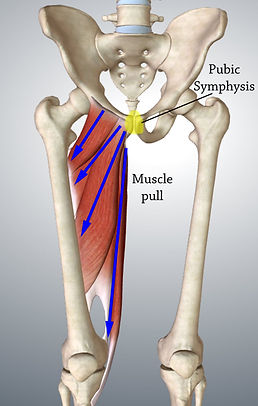

In the gif above the red band represents your adductors. The constant tension in OP patients acts as a shearing force, which pulls the pubic symphysis/bone.
Every foot strike, every explosive change of direction involves jamming on your adductors to brace and stabilize your leg. This constant workload has burned out your adductors… leaving you with OP.
BIOMECHANICS: IT’S ALL ABOUT WHERE THE LOAD GOES!
Your adductors are overworked. Don’t they feel tired, sore, tight and weak? Don’t they feel just like your entire legs do after a really long bike ride? But the better question is… why are they over working?
To answer this question we need to discuss some of the ‘biomechanical tendencies’ or more accurately faulty OP mechanics present to some degree in all OP patients.
Understanding biomechanics is the key to fixing OP, so let’s avoid being confused by big words we’re not 100% clear on. Biomechanics are simply a description of how we move. Let’s say your car wheels are out of alignment, tilting to the left. Then your wheel's biomechanics are that they tilt to the left, instead of being perfectly aligned with the road.
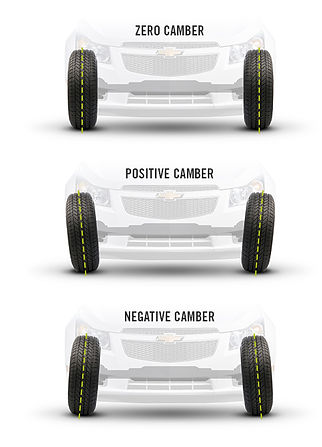
The human body is not light. And whenever you move your body weight is amplified. Walking increases your body weight by up to 2.5x on your foot as it strikes the ground. Sprinting can increase your body weight by 8x.
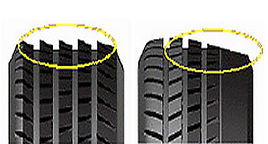
It’s the consequences of your ‘biomechanics’ that we are interested in because it tells us where this load is going. What does it matter if your car wheels tilt to the right? Well you’re more likely to wear out the right side of your tires.
This ‘biomechanical weakness’ doubles the load on your tyres at these specific spots. The grip in these spots wears out faster than the rest of the tyre. The word ‘load’ here is important. When you change your mechanics you change where the ‘load’ goes. If the tyres were evenly aligned with the road the tyres would wear out evenly.
Your biomechanics, that is the way you move, determines where that weight/load of your body goes. Change the alignment of your wheels > you direct the load to the outside of your tyres > the outside of the tyres wear out. Hunch your shoulders over your computer all day > go home with a sore neck and possibly a headache.
Over months or more likely years you have been changing your biomechanics. You have directed the load into your adductors while under-using other key muscle groups (such as your core, glutes and arches). This leads to your pain.
OP is simply less obvious than computer shoulders. You can see when you hunch your shoulders. The telltale signs of OP are more subtle.
It's simple. Change your biomechanics > distribute load evenly across the body > take the pressure of the adductors > the adductors will heal.
You don’t need injections, degrees or some magical treatment style to fix your OP. Just an understanding of how you’re moving wrongly and what you need to do to fix it!
‘OP MECHANICS’: THE TELLTALE SIGNS OF AN OP PATIENT
If your body is moving fluently, it is centred and balanced, distributing loads across the system evenly. So what are the faulty biomechanics that we call OP Mechanics? What do they look like?
The degree of each weakness differs from patient to patient, but in 99.9% of cases OP patients will exhibit all of the following 5 biomechanical weaknesses/OP mechanics. These are the signs.
Weakness 1: A hip drop whilst running
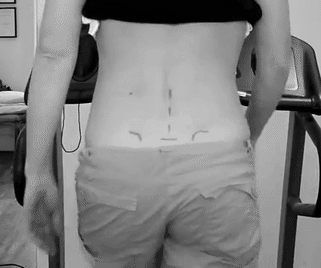
Hip drop means each side of the pelvis violently drops upon foot strike. This overloads the hips/adductors.
Weakness 2: Over pronation/supination


Over pronation is when the ankle rolls in excessively upon foot strike and twists all the joints of the leg.
Over supination is when the ankle remains rigid and fails to roll in at all. This forces all the load to the outside of the knee/leg, forcing the adductors to contract hard to pull the load back towards your midline.
Weakness 3: Anterior pelvic tilt/Anterior Pelvic sway
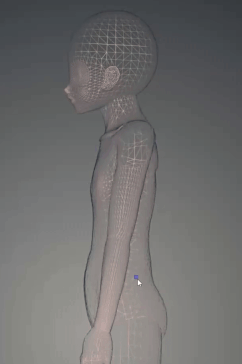
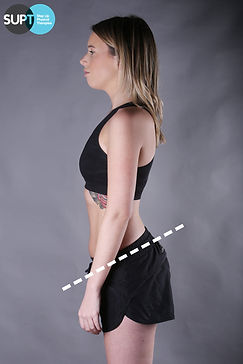
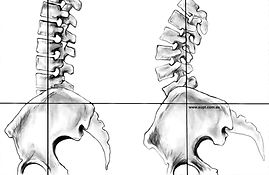
With Anterior pelvic tilt, the pelvis tips downward, increasing the force on the pubic bone and lower back.
An Anterior pelvic sway is when the entire shifts forwards, locking the Sacroiliac Joint and stretching the pubic symphysis.
Weakness 4: Knocked knees/bowed legs

Knock knees allow the knee to collapse in, which increases the pressure on the knee joint and adductors.
Weakness 5: Sacroiliac Joint (SIJ)/Pelvis
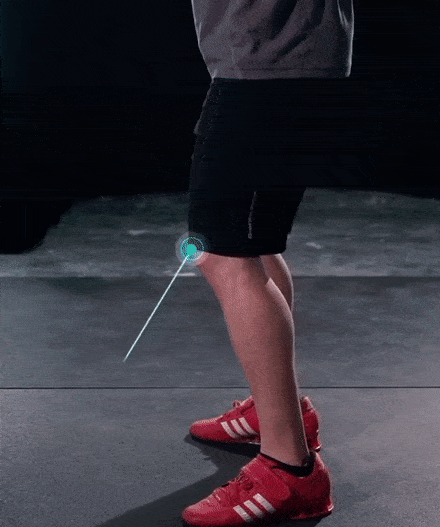
With Locked SIJ/Pelvis the pelvis cannot rotate in squatting movements which leads to compensation patterns such as excessive knee flexion and rounding/flexing the spine.
In running movements each side of the pelvis will fail to rotate separately; forcing you to shift, twist and bend the entire pelvis and spine with each step.
OP MECHANICS CAUSE WHIPLASH, BREAKING OF YOUR ADDUCTORS
See what’s happening – a kind of whiplash from load, force, tension, pressure. When your hip drops, you can see a ‘whiplash’ of force go across the body; through the spine, through the hips. The same applies to the other conditions. You can see the jarring effects of over pronation or knocked knees on the body.
The further you move away from proper alignment/centre of the joint, the faster this movement occurs, the more significant the damage.
ALL TOGETHER NOW: MOVING WITHIN OR AWAY FROM THE CENTRE
There is an uniting theme to the 5 OP mechanics. They all involve joints moving away from the body’s Centre of Gravity. The ankle joint collapses (over pronates) past the centre of the foot. The knees collapse in (knocked knees) past the foot.
Alignment is key; fixing OP is about strengthening specific core functioning systems whose purpose is to align and stabilize you within your Centre of Gravity. Your body is no different to a building. If you compromise the foundation, the walls start to crack.
The stiffness, pain and dysfunction experienced in OP is simply a consequence of your body’s movements. You are moving outside of your ‘centre/foundation’ and your ‘building’ is starting to crack. This is why fixing one sign or symptom is not enough to get rid of OP once and for all.
